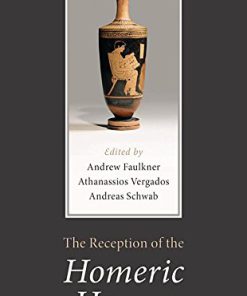The philosophy of trust 1st Edition by Paul Faulkner, Thomas Simpson ISBN 0191046485 9780191046483
$50.00 Original price was: $50.00.$25.00Current price is: $25.00.
The philosophy of trust 1st Edition by Paul Faulkner, Thomas Simpson – Ebook PDF Instant Download/Delivery: 0191046485, 978- 0191046483
Full download The philosophy of trust 1st Edition after payment

Product details:
ISBN 10: 0191046485
ISBN 13: 978-0191046483
Author: Paul Faulkner, Thomas Simpson
The philosophy of trust 1st Table of contents:
1. Introduction
This introductory section lays the foundation for exploring the concept of trust in various philosophical contexts. It sets the stage for understanding how trust is intertwined with cooperation, knowledge, and social philosophy, framing trust as both a foundational concept in human relationships and a philosophical challenge.
2. The Empowering Theory of Trust
This chapter presents the Empowering Theory of trust, which emphasizes trust as a form of reliance that empowers individuals to act. It contrasts this view with other philosophical theories and introduces the notion of trust-responsiveness—how a person or group responds to trust in a way that fosters empowerment and mutual cooperation.
3. Trust as a Second-Personal Attitude (of the Heart)
Here, trust is explored through the lens of second-personal attitudes, focusing on how trust is relational, involving not just belief but an emotional and reciprocal stance. The chapter contrasts trust with other deontic (duty-bound) attitudes like promising, showing that trust is not merely about obligations but about a deeper, non-deontic emotional commitment.
4. On the Risks of Resting Assured: An Assurance Theory of Trust
This chapter addresses the risks associated with trusting others and introduces the concept of assurance theory. It explores situations where trust is undisappointed yet still feels betrayed, highlighting how trust can act as a medium for both interpersonal reasoning and intrapersonal coherence in human relationships.
5. Betraying Trust
This chapter investigates the complexities of betrayal within the context of trust. It defines the formal properties of trust obligations and differentiates between non-moralized and moralized trust. Betrayals of trust are examined, analyzing the implications of broken trust and the responsibility involved in restoring or maintaining trust within relationships.
6. ‘But I Was Counting On You!’
This chapter looks at the normative force of the phrase “But I was counting on you!” and examines the emotional and moral weight carried by trust-based expectations. It offers an alternative explanation for the normative force of this complaint and explores norms of trust and trustworthiness, addressing how we hold others accountable when trust is at stake.
7. The Problem of Trust
In this section, the Trust Game is discussed as a model for understanding the dynamics of trust. It looks at philosophical solutions, such as Gauthier’s internal solution and Pettit’s approach to trust responsiveness, culminating in the trust-based solution. The chapter addresses how trust works as a two-place relation, involving both the trustor and the trustee.
8. Trust and Collective Agency
This chapter focuses on how trust plays a central role in collective agency. It introduces concepts such as genuine trust, the coordination puzzle, and team reasoning—how groups rely on trust to make coordinated decisions and work towards common goals. Trust is shown to be a constitutive element of collective agency, essential for shared goals and collective action.
9. Trust as a Two-Place Relation
This chapter develops the two-place account of trust, arguing that trust is a relationship between two parties, where one places trust in the other. The text explores the implications of this model for understanding reliance, reactive attitudes, and the extent to which trust can be extended in various situations.
10. Deciding to Trust
This chapter addresses the voluntarism vs. anti-voluntarism debate in trust theory. It examines whether trust is something individuals can willfully choose (voluntarism) or whether it arises from a deeper, involuntary response to others’ actions. Trust is considered in relation to human agency, highlighting how we decide when and whom to trust.
11. Trust and Evidence
This chapter explores the relationship between trust and evidence, examining when trust is grounded in evidence and when it is based on other forms of judgment. It introduces plural forms of trust, discussing how different types of evidence (such as testimony or track records) can either support or undermine trust in particular contexts.
12. Being Pragmatic about Trust
This chapter offers a pragmatic perspective on trust, questioning its role as an explanatory concept in social interactions. It revisits Baier’s view on trust and discusses how trust can be constrained by the practical realities of dependence and responsiveness. The chapter considers whether trust is natural, social, or political and concludes with reflections on its conceptual significance.
13. Trusting a Promise and Other Things
This chapter focuses on trust as it relates to promises and social coordination. It distinguishes between different forms of trust, such as trust in promises as mechanisms for social coordination or as tools for cultivating personal relationships. The chapter concludes by reflecting on how promises shape the practice and nature of trust.
14. Trustworthy Groups and Organizations
This chapter shifts focus to trust within groups and organizations. It discusses the trustworthiness of groups and institutions, and how reliability, collective testimony, and group action impact the social dynamics of trust. It emphasizes the importance of trust in group decision-making and in fostering ethical organizational practices.
15. Faith in Kant
This section examines the relationship between faith and trust in the philosophy of Immanuel Kant. It explores how Kantian principles of moral faith align with or challenge the nature of trust, especially in terms of evidence and moral duty. The chapter critically defends Kant’s framework and considers how his ideas about moral faith relate to the broader concept of trust.
16. ‘Trust is Basic’: Løgstrup on the Priority of Trust
The final chapter introduces K.E. Løgstrup’s view that trust is a basic, foundational element in human relationships. Løgstrup’s assertion that “trust is basic” emphasizes its primacy in establishing social bonds and cooperative behavior, positioning trust as an essential, underlying aspect of human life.
People also search for The philosophy of trust 1st:
explain the philosophy of trusteeship
what is the philosophy of trusteeship
the routledge handbook of trust and philosophy
philosophy of the prison reform trust
trust the universe the philosophy of alan watts
Tags:
Paul Faulkner,Thomas Simpson,philosophy,trust 1st
You may also like…
Education Studies & Teaching
International Handbook of Philosophy of Education 1st Edition by Paul Smeyers ISBN 978-3319727592
Fiction - Historical
Politics & Philosophy - General & Miscellaneous Philosophy
Philosophy of Action 1st Edition Sarah 1317245032 9781317245032
Politics & Philosophy - Anthropology
William Faulkner at Twentieth Century-Fox: The Annotated Screenplays William Faulkner
Business & Economics - Responsibility and Business Ethics
Trust Factor The Science of Creating High Performance Companies 1st Edition Paul J. Zak
Poetry - American Poetry
History & Research
Education Studies & Teaching - School Education & Teaching
The Philosophy of Mathematics Education Today 1st edition by Paul Ernest 3319777603 9783319777603
Education Studies & Teaching
The Philosophy of Mathematics Education 1st Edition Paul Ernest












